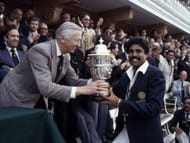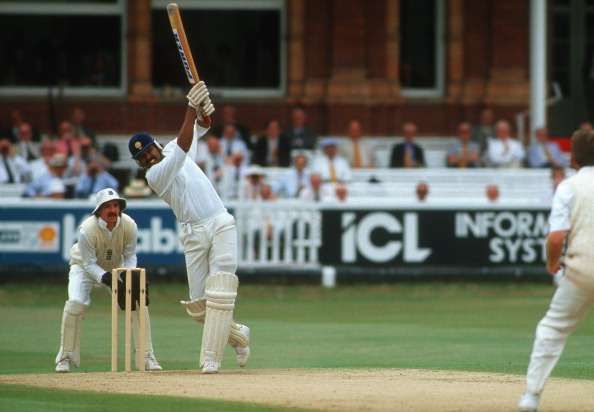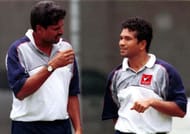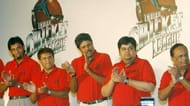”Fame is a fickle friend, Harry.” – Gilderoy Lockhart, “Harry Potter and the Chamber of Secrets”
In all the years that India have played cricket on the world stage, there have been many instances when they were nothing more than amiable trundlers, and easy fodder for batsmen across the globe. There was, of course, the occasional moment of brilliance (remember the 1971 series against the West Indies?), but apart from that, there wasn’t much to cheer about in the fast bowling department.
Then arrived a phenomenon – a strapping, rustic youngster, whose run-up to the bowling crease was more like a predator than a placid cow. For the next decade and a half, the youngster would go on to become one of the cornerstones of Indian cricket as they strode towards becoming a force to reckon with in the international arena.
His name? Kapil Dev Ramlal Nikhanj – the one whom many children growing up in the late eighties and early nineties (including me) fondly remember as the Palmolive da jawab nahin man.
A bowler who led the revival of India’s pace bowling stocks to such an extent that they were, at his peak, on par with the world’s best – such was the Haryana native’s prowess.
An “accidental” leader who guided his side to the pinnacle of ODI cricket glory in 1983 – so much so that the mighty Calypso kings were awed by the audacity of the effort put in to achieve that victory. The sweetest reward came five years after his adieu from the game – coaching the team of which he was once a proud member.
15 years on from that zenith, came his nadir – a string of losses, the sordid saga of match fixing and betting, and the move to a rebel cricket league. For a man who rose from humble cricketing origins, the stigma of being labelled as a cheat stung the most.
And his reputation was savaged – in part due to his own handling of criticisms levelled at him – leaving his stature as a respected cricketing great diminished in lustre.
So, what did happen? Let’s take a look.
The 1983 World Cup victory – his crowning achievement
No one gave India a chance, after less-than-satisfactory sojourns in the previous two editions of the quadrennial World Cup tournament. The third edition changed all that.
How many would have given the subcontinent nation a chance when they were precariously placed at 17/5 against minnows Zimbabwe? Only Kapil. A restrained innings, backed by incandescent power hitting after reaching the three figure mark, justified the selectors’ decision to place the burden of leadership on the young man’s shoulders.
The first five-wicket haul by an Indian bowler in ODIs, and taking the vital catch of the swaggering Viv Richards in the final – spearheading the triumphs of a side only considered batting heavy – pulled the Indian captain’s star into the ascendant.
Old timers also recall fondly of the man’s extraordinary late spell of three wickets in six balls against New Zealand in 1986, emulating Ian Botham to the all-rounder’s double of 3000 runs and 300 wickets in Tests, taking the first hat-trick in ODis for India in 1991 – all of these stand out in memory.
It took 28 years for the Men in Blue to regain the title they captured. By then, one of the chief architects of that memorable triumph was long gone from the game. Never did he reach such heady heights again in the ODI arena; his reputation in tatters and his great deeds forgotten.
The Rescue Act and Number 434 – India’s greatest all rounder
Former England off spinner Eddie Hemmings may have mixed memories of July 30, 1990. At the site of cricket’s most hallowed turf, the veteran tweaker came in for some heavy punishment at Kapil’s hands. The Indians, watching from the sidelines, received the best crash course in how to avoid the follow-on.
Each of those four sixes that the former skipper struck had authority and power of old. The style was more reminiscent of his 175 at Tunbridge Wells seven years ago. Although India eventually fell to a 247-run loss, they avoided outright ignominy solely due to the Haryana Hurricane’s blistering unbeaten 77. The nature of this effort doesn’t resemble that of a greedy man, does it?
Four years later, the seal of immortality was forever stamped on Indian cricketing annals when the ageing all-rounder took out Sri Lanka’s Hashan Tillakaratne at Ahmedabad, breaking New Zealand’s Richard Hadlee’s tally of 431 Test wickets and finishing on 434 overall. Of this feat, the Nawab of Pataudi had (apparently) quipped:
“Whoever beats this record, will be one tired man.”
The first signs of controversy in an otherwise glorious career appeared when a furious Kapil “Mankaded” South African batsman Peter Kirsten during a game at Port Elizabeth. The sight of him exchanging angry words with the batsman, and stressing that he had previously warned him three times, resulted in the entire establishment witnessing a hitherto-unseen side of the veteran all rounder. Although the matter was resolved with a fine to Kirsten, it did leave a bad taste in everyone’s mouths.
He finished his international career with a whimper at Faridabad – a heavy defeat at the hands of the West Indies at home is definitely not something a proud cricketer can stomach for long. 16 years of top-flight cricket, without a single break due to injury (sickness and lack of form might be excused), resulted in India becoming a fine strike force on the world stage.
Then began the slow descent.
Coaching troubles and a man’s tears
With Sachin Tendulkar taking over as captain of India, it was necessary for the squad to have a guide with the “same mental wavelength” as the skipper. No one better than Kapil Dev, right? So in September 1999, the former Haryana pacer was anointed as the coach of the Indian national cricket team – pipping his former teammate Kris Srikkanth to the post.
Under his stewardship, however, India lurched from the highs of victories over New Zealand to the lows of an Aussie whitewash (away) and a South African wipeout at home. What disheartened Tendulkar at the time, as he mentions in his autobiography Playing it My Way, was that his former senior in India colours kept himself away from talking and discussing strategy, operating mostly in a hands-off manner.
Now Kapil might have been guilty of being a “passive” coach. But there is another side to it – he may have felt that the team, under experienced hands such as Tendulkar, Ganguly and Dravid, would be mature enough to plot the downfall of the opposition while fortifying themselves with the right mix of batsmen and bowlers. The argument doesn’t cut too much ice, but it is certainly food for thought.
Nevertheless, the coach’s spotless record (and his integrity) was called into question. The match fixing and betting scandal broke. Hansie Cronje was sacked, and a number of unsubstantiated allegations from former India player Manoj Prabhakar were taken seriously. And India reeled from the double blow.
The man whom we idolized growing up, the ever-smiling cricketer with his signature line (”Palmolive da jawab nahin”), the one who took India to such dizzying heights – how could he be so callous as to throw away a match for money?
The whole world was after his blood. Pressure mounted daily, in the form of veiled attacks, barbs and jibes,from both the media, BCCI influencers, and politicians.
He did what any man would do under such circumstances – he broke down on live television during an interview on the BBC. It wasn’t an admission of guilt – it was the sight of a man so tormented, so broken by the relentless lies and half truths, that he was eventually shattered to pieces. In terms of the emotional reaction, it reminded me of Kim Hughes’ tearful announcement in 1984.
Eventually, Kaps (as he was fondly nicknamed) resigned from his coaching job, and cut all ties with cricket. He was also exonerated from all charges levelled at him. Small comfort for a man who had always been a proud servant of his nation for almost two decades.
Much in the same way that former Australian captain Bill Lawry described Hughes’ decision to quit as leader of the Kangaroos, Kapil’s crucifixion and trial-by-public can be summed up thus:
“The demise of Kapil Dev’s reputation, and the tarnishing of his cricketing legacy, is akin to being dragged down and devoured by your own, with and without. It is, put it simply, a disgrace.”
The veteran rebel and the saga of the Indian Cricket League
Zee Entertainment head honcho Subhash Chandra is known for his numerous attempts to get a substantial piece of the lucrative pie that cricket offers to his ilk (businessmen). When the BCCI refused to award his Essel Group the rights to broadcast matches on more than one occasion, the tycoon formed his own cash-rich Twenty20 tournament – the Indian Cricket League (ICL).
Kapil, who had come out of his self-imposed cricketing exile, worked as a bowling consultant prior to India’s tour of Pakistan in 2004, and was made Chairman of the BCCI’s National Cricket Academy (NCA), was roped in to head the rebel league. Along with his former teammates Kiran More and Sandeep Patil, he described the initiative as “helping to find the Indian board more talent”.
In response, the BCCI ended up not only banning the ICL, but also revoked the pensions of all ex-players associated with the breakaway faction. Dev was singled out for harsh treatment – the BCCI sacked him from the NCA post as well as withholding his pension. A legal tussle followed, with the 1983 WC winner emerging victorious.
Mercenary? Perhaps. But he is a retired cricket player after all. He does have the right to create and nurture a source of income for himself and his family. Sure, he has invested in many businesses, got into the restaurant segment, and has appeared in a few Bollywood movies. It still doesn’t make him a gun-for-hire.
Fame is indeed a fickle friend. Kaps’ reputation was tarnished by what happened off-field, and he has had to pay heavily for those incidents. Now all that remains is a shadow of a once-great cricketer who made the world sit up and take notice of India, the one who taught us to fight on equal terms.
His greatness can never be diminshed. Period.
Brand-new app in a brand-new avatar! Download CricRocket for fast cricket scores, rocket flicks, super notifications and much more! 🚀☄️




